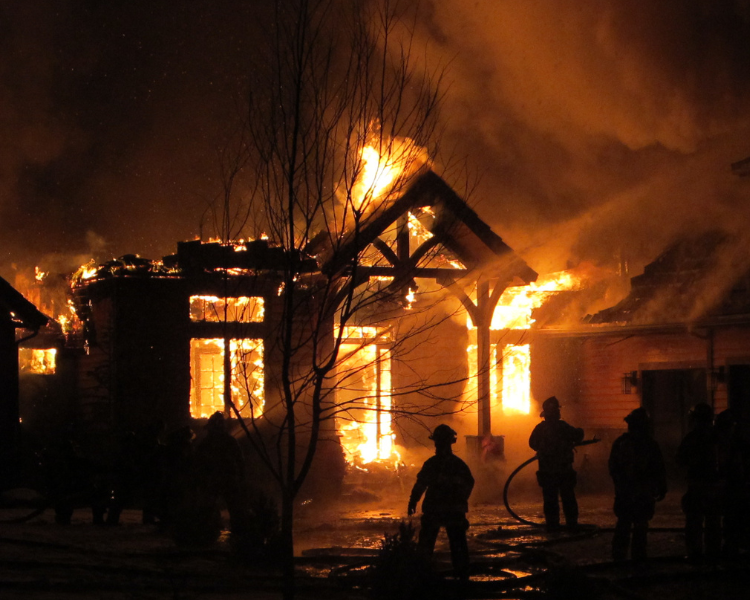Introduction
When it comes to residential construction, safety is paramount. The materials chosen for the building's structural framework can significantly impact its vulnerability to various hazards, including fires. Recent global fire events have captured news headlines, amplifying the demand for more robust fire prevention measures.

Non-combustible materials, such as steel framing can significantly reduce the risks, saving lives, properties, onsite damage and resources.
By utilizing steel framing instead of wood and exploring what happens to steel when exposed to fire, the risk of damage from house fires can substantially be reduced.
Understanding the Risk - Wood Framing and House Fires
Wood framing has long been a staple in residential construction due to its affordability and ease of use. However, wood is a combustible material, which poses a significant fire risk. In the unfortunate event of a house fire, wood framing can contribute to the rapid spread of flames, potentially causing extensive property damage and endangering lives.
Statistics
According to the US Fire Administration, residential house fires in 2021 equated to a staggering 353,500 fires, 11,400 injuries, 2,840 deaths and a dollar loss of $8,855,900,000.
In our recent episode of the Build it Better Podcast, Joe Doxey discussed that the average yearly figure for manufactured homes in Colorado is 11,400 fires, $179 million in property damages, 434 injuries and 206 deaths - all made of wood.
The Advantages of Steel Framing
Non-Combustible Nature
One of the most significant advantages of steel is its non-combustible nature. Unlike wood, steel does not burn, making it inherently resistant to ignition. This characteristic can act as a crucial line of defense against the rapid progression of flames during a fire incident. Research has also set the melting point of steel at approximately 2700°F, which means that it will not melt in a building fire, where temperatures average 1000°F and almost never exceed 1800°F.
Reduced Fire Load
The use of steel framing reduces the overall fire load on residential structures. Fire load refers to the total amount of combustible materials present in a building. By utilizing steel framing, which does not contribute to the fire load, you can mitigate the risk of fire hazards and potentially limit the extent of fire-related damage.
Fire-Resistant Coatings
Steel framing can be coated with fire-resistant materials, further enhancing its ability to withstand fires. These coatings can provide additional protection by delaying the onset of structural failure during a fire, allowing occupants more time to evacuate and first responders more time to contain the blaze.
Durability and Longevity
Renowned for its durability and longevity, steel does not degrade, warp, or rot over time like wood. This not only contributes to the overall structural integrity of a building but also ensures that the fire-resistant properties of steel framing remain effective for the lifespan of the structure.
Lowers Insurance Premiums
Opting for steel framing over wood framing can influence insurance rates for residential construction projects. Insurance providers recognize the reduced risk associated with steel-framed structures, making it a more attractive option for both developers and homeowners alike. There are significant savings in Builders Risk Insurance due to its non-combustible properties. There is also an approximate savings of 20% annually for ongoing General Property Insurance.
Summary
When it comes to residential construction, prioritizing fire safety is of utmost importance. While wood framing has been a traditional choice for its ease of use, the risk of fires cannot be overlooked. By opting for steel framing, developers can significantly reduce the risk of house fires, enhance the safety of residential structures and provide occupants with a higher level of protection in the face of unforeseen emergencies. Steel framing can create a safer and more resilient home for communities across the United States and the rest of the world.
Discover more benefits of building with steel framing in our residential eBook.







